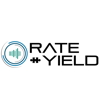
I love to travel. Over the years I have travelled on my own for business, with friends, with my husband, and with my family. In each of those instances, my travel plans started with what I needed most to make my travel comfortable in keeping with my budget.
When traveling for business, I had a budget that was set by the company. Within that per diem, I would look for the best value for money. The best-case scenario would be a room with a king bed and a comfortable set up to work. Traveling with friends for a weekend getaway usually requires two beds, and our allowance is slightly higher because we are sharing the costs. With my husband, I want a king bed and maybe a nice view. The location is important because we like to walk around and visit, but if we decide to order breakfast through room service, we want a comfortable set up.
Now that I have two young children, comfort is an even more important factor, and I am willing to pay for certain things. Our ideal scenario includes a fridge and microwave, a closed bedroom with a separate living room and access to the bathroom without going into the bedroom. The kids go to bed at 7pm and my husband and I need time to unwind! If there are no suites available, we still need enough space to put the crib for our youngest. We very rarely book the standard room when traveling as a family, and we are happy to pay more if it means we will have a nicer time.
When thinking about pricing your hotel’s different rooms, consider the above buyer personas. You can evaluate which rooms sell out faster for different travel periods. Once you understand the unique trends for your hotel, set up a pricing strategy that matches that. While many hotels offer superior rooms at fixed price differentials, Rate Yield allows for dynamic room type management.
One example is that differentials can be set in percentages rather than by dollar amount. If your standard room sells for $200 in January and your superior is $50 more, that is a differential of 25%. But if your standard room sells for $400 in July and your superior is still sold for $50 more, your price differential is 12.5%. If you were to set your differential at 25%, this pricing would fluctuate according to the buying power of your customer. Another available option is to manage your room types differently by season or by day of week. There are also multiple override options that make it easy to increase revenue by optimizing your pricing for each room type.
Managing the pricing for different room types is a crucial part of optimizing revenue, and Rate Yield makes it easy to do just that!
Rikki Cavanagh is the Director of Sales, Marketing & Business Development at Rate Yield. Connect with Rikki on LinkedIn.
About Rate Yield

Rate Yield was created in 2019 by seasoned Revenue Management consultants with over 30 years of experience within the field. Rate Yield RMS was designed to adapt to small hotels, inns, resorts as well as large hotels in city centers. With settings and thresholds that can be modified against a hotel’s unique market trends, Rate Yield makes it more accessible than ever to implement AI in revenue management strategies. With real-time insights, agile strategy development, modules for budgets and forecasts, as well as a tool for displacement analyses, Rate Yield provides a complete software that will help your hotel to yield more revenue, period! To learn more, visit us at www.rateyield.com.